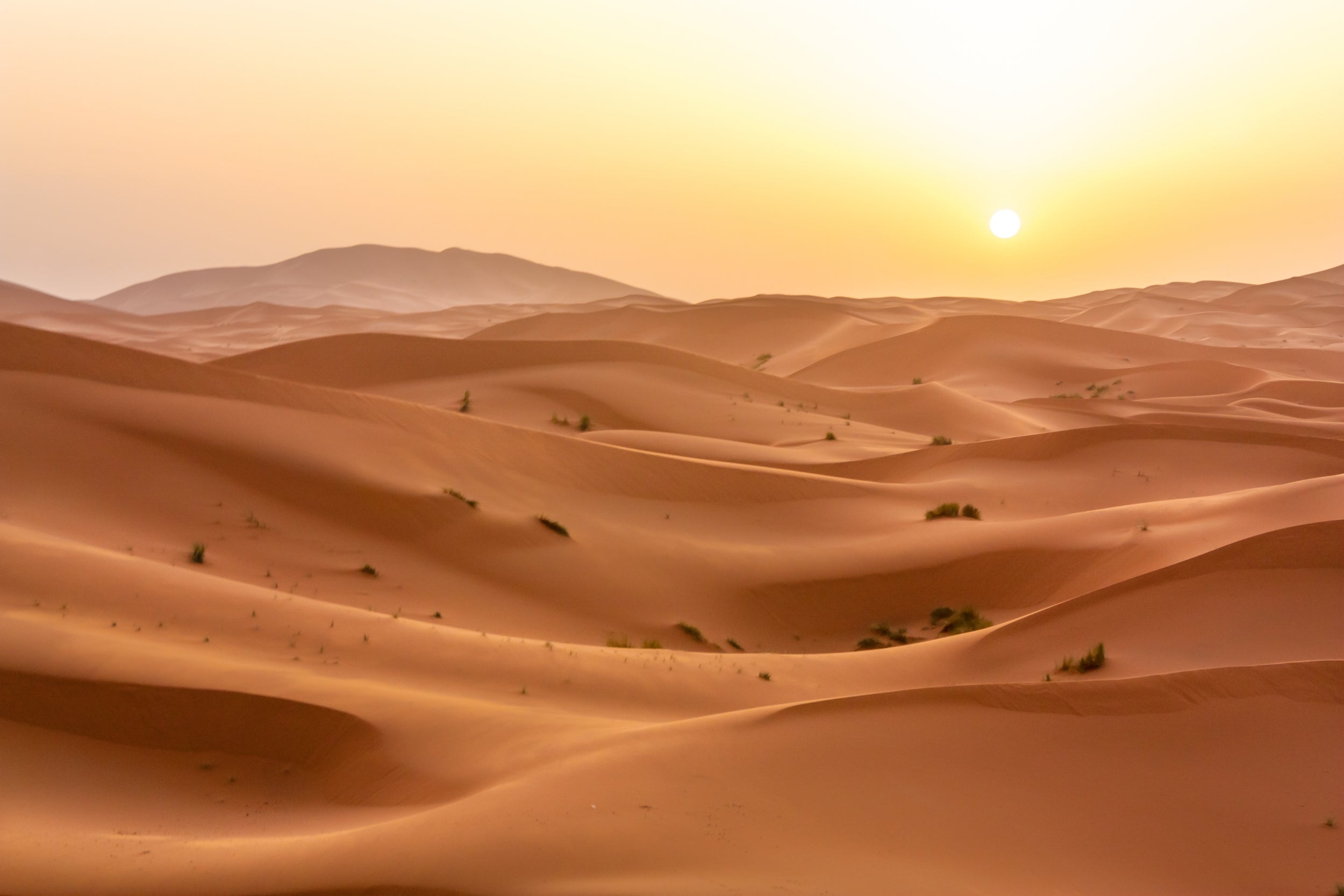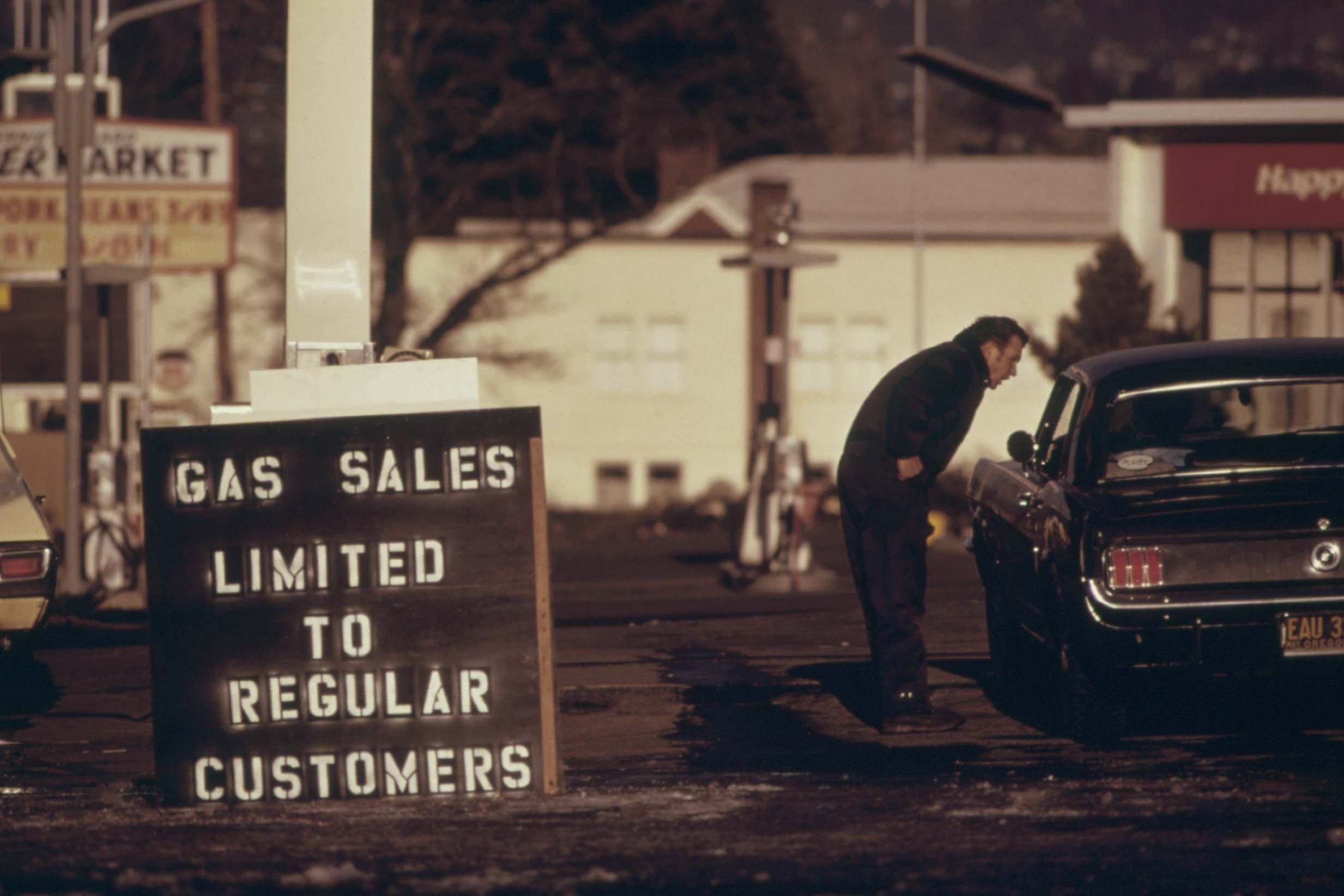Does the Sahara desert hold the key to unlocking unlimited solar power?
Bigger than North America and without the obstacles of wildlife or people, setting up power stations across the desert could give the world a clean, renewable future. So why hasn’t it been done already, asks Steven Cutts


There are some problems we never seem able to solve. The shortage of electrical power is one of them. Ever since President Carter proclaimed an energy crisis in the 1970s, people have been talking about all kinds of weird and wonderful solutions to the issue of energy and – thus far – no one has come up with one single answer.
While solar power is now providing as much as 4 per cent of British electricity, few people appreciate just how quickly electricity production will have to increase. If the internal combustion engine is on its way out then the western world will need to double its electrical supply just to recharge its battery-powered vehicles.
Progress on this scale demands a fundamental rethink of our entire energy supply industry. The beginning of the 21st century saw a group of German engineers doing just that. They developed a plan to harvest solar power in the Sahara desert and transmit the stuff across the Mediterranean using very high-voltage, direct-current cables.
Just as Carter had been influenced by the oil shock of 1973, the Germans had been influenced by the disaster in Chernobyl and a mounting recognition that all technology is associated with risk. At that stage, large scale solar power plants still sounded like science fiction but the potential of solar power had long been recognised.
One German engineer calculated that the amount of solar energy absorbed by the world’s deserts exceeds the total amount of energy consumed by man in an entire year. We’d only need to harness a small proportion of this energy to provide us with all the electricity we are likely to need without any of the usual headaches surrounding pollution or fuel supply.
The Sahara is a vast area of land, larger, even, than the continental United States and extending over several national boundaries. It would take only one or two per cent of the land here to provide the whole of Europe with electrical power. There isn’t a lot of wildlife to destroy in the desert and since the population density is close to zero, we can probably avoid the nimbyists too.

At first sight, though, the Sahara isn’t quite as perfect since much of the land here is still some distance north of the equator. As we approach the equatorial regions of the world, it seems logical to assume that the intensity of sunlight ought to go up. However, the equatorial region of the planet is associated with a much higher level of cloud cover than the Sahara and on balance, about 20 to 30 degrees north of the equator turns out to be the ideal location for a large scale solar power plant.
Plenty of land, plenty of sun, not a lot of cloud and not that far from the nearest major market for electrical power, western Europe.
Some manufacturers are now producing photovoltaic panels that are cosmetically indistinguishable from traditional roofing tiles. It’s easy to envisage a future where it becomes compulsory
Many of the nation states in the region are quite poor with little or nothing in the way of oil or gas reserves. Ever since the 1970s, countries with significant oil reserves have been able to cash in on the oil boom and increase its standard of living overnight, whereas a nation that lacks oil reserves is forced to import at potentially enormous cost. Thus far, this kind of prosperity has been based on geological accident, but solar power is different. Soon, relatively poor countries might have access to a major energy resource of their own, enabling them to generate their own power at home and to export anything left over to western Europe.
So why isn’t it happening?
Part of the appeal of large-scale solar power generation is the opportunity it provides for a secure energy supply. Ever since the early 1970s, western governments have been living in fear of another Opec crisis or – at the very least – some sort of military and political confrontation that might interrupt the supply of energy. When we try to calculate how many lives might be lost or damaged by one source of energy or another, we really ought to factor in how many lives we’d be likely to lose by fighting another war for oil. Politicians who are too young to remember the Yom Kippur War are old enough to understand Putin and the fear that he might try to suddenly cut off the supply of natural gas to western Europe as part of some alternative economic warfare. What will Nato actually do if that happens?

But our friction with the Middle East goes back even further than Yom Kippur. A generation older than my own has not forgotten the Suez Crisis. During the 1950s, the Egyptian president Gamal Abdel Nasser decided to seize the Suez Canal and nationalise the entire project. The countries, companies and investors who had paid for its construction were far from pleased. Attempts at recapturing the canal ended in fiasco. The Egyptians came out of the 1950s quite well.
Against this is the relentless march of progress and the emergence of new tech that has thrown the whole equation into disarray. Just 10 years ago, the environmental movement was obsessed with the idea that western governments should continue to subsidise solar power. In those dim and distant days, solar power was so costly that people had to be bribed to actually use it. This is no longer the case and governments believe that it is entirely reasonable to phase out their solar power subsidies. Whilst this decision may be premature, it’s hard to ignore just how quickly the price of a photovoltaic panel has fallen. Part of the reason for this is mass production and part is the Chinese desire to subsidise their own industry, effectively destroying their competitors.
Panels are falling in cost so rapidly that it is not unreasonable to suggest that we should delay buying them just to wait for the next major price fall. Some manufacturers are now producing photovoltaic panels that are cosmetically indistinguishable from traditional roofing tiles. It’s easy to envisage a future where it becomes compulsory for all new housing to be built with a photovoltaic roof. Given that Britain turns over about 1 per cent of our housing stock every year, it also isn’t difficult to envisage a future where the majority of homes in the country are self-sufficient in energy.
But if the vogue towards a cheap and efficient energy-powered future continues, people are bound to look at the Sahara again. A vision of the desert practically covered in solar power panels is now a reality with a number of projects already having been established in North America and north Africa.
There are already accusations that North African Solar Power represents a rebirth of colonialism with European powers attempting to snatch resources from Africa and seize it for themselves
Engineers in Moroccohave built one of the most ambitious solar energy projects on the planet. Using Spanish technology, they have built a system of mirrors designed to reflect the sun’s rays onto a large box that has been placed on a pedestal in the centre of the solar farm. This kind of energy generation is different from photovoltaic panels. It requires moving parts and a different attitude, but it has advantages too.
The mirrors are placed on rotating platforms so they can move throughout the day to follow the sun. By synchronising the position of each mirror to the day-night cycle, the maximum possible energy can be directed at one point. That point is a box containing salt. The salt soon melts into a sort of man-made lava and can be moved as a fluid along pipes where it is used to heat water, which in turn generates steam. The steam can then drive turbines creating electricity. This kind of installation involves multiple moving components and would require more maintenance than a standard PV panel. However, the molten salt can remain hot well after sundown and continue to generate electricity for up to seven hours into the night. Given that a country like Morocco would typically experience about 12 hours of daylight, this still leaves the problem of the energy gap in the early hours of the morning while the system waits for the new dawn, but it’s much more comprehensive than PV. This kind of technology uses a lot of water for cooling purposes and this might restrict its use. But it’s already quite popular and a number of such systems have been built in the United States.

This kind of vision requires us to believe that it might be possible to transmit energy over vast distances. Electricity is pretty ephemeral stuff; it doesn’t lend itself to long-distance transportation. In complete contrast, crude oil is a liquid that can be pumped on and off a cargo ship quite easily. They say that if you stand on the bridge of an oil tanker sailing to Japan you can see the smoke from the funnel of the tanker ahead of you and the tanker behind you. Such is the hunger of the Japanese economy for the dark black liquid.
We still don’t know how to bottle electricity and the problems associated with battery storage remain formidable but progress has been made. There have been major electrical cables under the North Sea and the English Channel for many years now. In the southern hemisphere, the Australian government has also built a cable linking Tasmania with the Australian mainland so the idea of using high-energy, direct-current transmission from north Africa to Europe isn’t quite as far-fetched as it sounds. In these circumstances about 12 per cent of the power generated in the Sahara would be lost during transmission. Most authorities believe that the advantages of increased sunlight intensity associated with the north African environment outweigh the problems associated with this power loss.
And if the north African power plant succeeds? What then? Many of the countries involved have a clear memory of their days as European colonies and for some African politicians this is a difficult memory to forget. There are already accusations that north African solar power represents a rebirth of colonialism with European powers attempting to seize resources from Africa for themselves. Some of the optimists for solar power in the Sahara have suggested that most of our power could be generated in the desert but while this kind of political friction still exists, it’s hard to imagine European governments allowing more than 10 per cent of their grid to be supplied from overseas.
Join our commenting forum
Join thought-provoking conversations, follow other Independent readers and see their replies
Comments
Bookmark popover
Removed from bookmarks